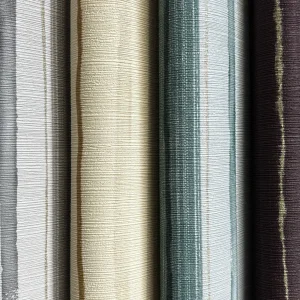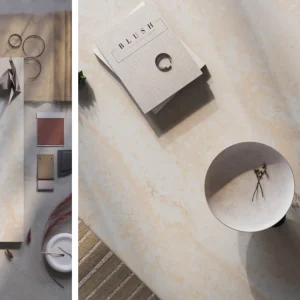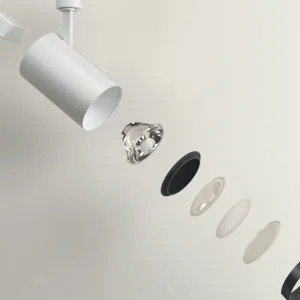The eight-storey patient tower was completed after six years of planning, designing and construction including feedback and testing by doctors and nurses. The new patient tower features 128 beds with 40 earmarked for intensive care patients and 88 for medical and surgical patients.
The new tower is designed to facilitate easier interaction and movement between health workers and patients. The previous small lobby with a cramped area for patient registration has been renovated into a bistro area. The new lobby features a semicircular information desk leading to four oversized registration centers that are divided by cherry wood frames and frosted glass etched with drawings of plants and birds.
The tower is designed with nature as its dominant theme. The lobby contains rich cherry wood walls and soft green carpets while the patient rooms are painted with earth-tone yellow and blue fabrics and paints. All the public areas are adorned with the works of mid-Missouri artists selected by H&P Consultants of Columbia.
The waiting area of the intensive care unit can accommodate 64 people, and is designed to create areas for privacy. The walls of the standardized ICU room are adorned with Cherry wood laminate and divided into zones. The caregiver zone inside the room features a work area and data ports. The patient zone includes features designed for optimum rest and comfort. A shelf is placed opposite patient beds, high enough to let them see flowers and gifts.
The family zone features a sofa that can be converted into a twin-size bed. The sofa sits below a window that takes up nearly all of one side of the room. The wall is built at an outward angle to allow infiltration of natural light. The sinks and countertops are made of one piece with no cracks or areas that can be difficult to clean to help reduce bacteria and infections.
Every room in the new tower will be exactly the same so that clinicians can step from one room to another. Construction of similar rooms required incorporation of separate plumbing stacks instead of shared plumbing stacks that could be used when mirroring the rooms.
With patient rooms located on the perimeter, each floor’s center contains work stations and three medicine rooms, three supply rooms and three rooms for utilities and soiled linen. Each of the rooms has a door at each end to enable staff to access them from either of the two hallways.
All of the interior walls facing the hallways are angled to match the exterior windowed wall. The angle enables clinicians to easily glance into each room as they walk down the hallway instead of having to turn their head from side to side. The angled walls also provide a corner at the entrance to each room where nurses can park their work stations on wheels without obstructing the eight feet wide corridor. An isolation closet is located after every other room. The nooks also feature data ports in case the wireless network is unavailable. At the end of each hallway, a large picture window is featured to provide views of the city and to let in more natural light with built-in benches for visitors.
Patient rooms will occupy the second through fifth floors, with the sixth and seventh floor reserved for future expansion. The eighth floor is the mechanical “penthouse” for utilities. The hospital’s lab services, located on the ground floor, are scheduled to open in late 2011. The labs are being built at an additional cost of $5.9 million. A gift shop with ceiling-to-floor windows and a conference center to accommodate 250 people for meetings, seminars and training sessions are featured on the main floor.
The patient tower was first proposed as part of Boone Hospital Center’s master plan in March 2006. The master plan called for all hospital rooms to include just one patient. Semiprivate rooms were built in the original building and in additions finished in 1959 and 1971. These rooms will be converted to private rooms in future beginning with the third floor.
Boone Hospital Center’s new patient tower will also target LEED certification. The site landscaping of the building will function as a natural system with Missouri-native plantings and grasses, which will hold soil from erosion, soak up and filter stormwater runoff and provide food and cover for wildlife. Large canopy shade trees will be planted around the parking lot, along Williams Street and near all paved areas to provide protective shade, windbreak and to absorb rainwater.
The heating, air conditioning and ventilating systems of the building are designed to achieve 14% savings in energy consumption. Solar collector panels are being placed on the roof for supplemental preheating of hot water. Water use in the facility will be reduced by the use of low-flow toilets, urinals, showers and faucets. Public restrooms will have automatic sensor controls. Occupancy sensors will also be used in staff areas to provide automatic control of lighting.
Exterior windows of the facility are triple insulated to minimise heat loss in the winter and heat gain in the summer. Up to 20% of the materials used in construction have recycled products as part of their makeup. Materials that are produced and manufactured within a 500-mile radius of Boone Hospital Center were used for the project to reduce transportation costs and emissions.





